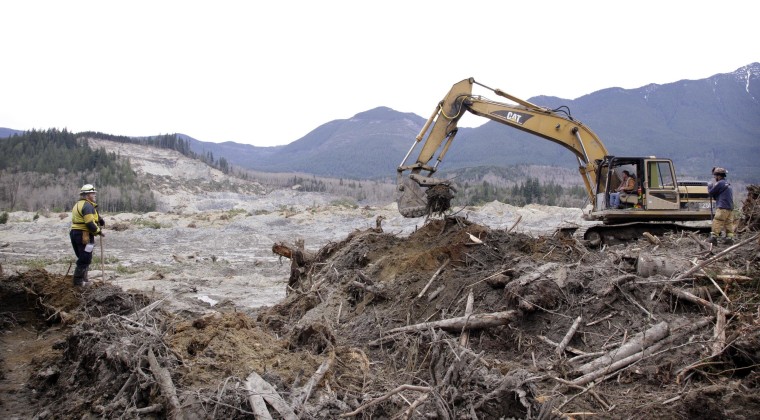Ten years before last month’s landslide washed over a Washington community, killing at least 30 people, county officials considered buying up the homes in the area to protect people from the possibility of just such a disaster.
A Flood Hazard Management Plan drafted by Snohomish County officials in 2004 said the monetary cost of moving people from homes that were in the potential path of a landslide “would be significant, but would remove the risk to human life and structures."
Documents first reported by the Seattle Times showed county officials considered purchasing flood and landslide-prone properties in two different areas — including the north fork of the Stillaguamish River where Oso sits — at the cost of $3 million.
Jim Miller, a geological engineer with GeoEngineers, also said his company prepared a 2004 report and offered three options for preventing loss of life and property during a landslide, including moving homes. The report was cited in the Flood Hazard Management Plan, and Miller told Reuters the most "extensive" option of removing homes would have been “the most protective.”
Instead, authorities opted to try to stabilize the base of a nearby slope — dubbed Hazel Landslide and Slide Hill — and let residents stay put, even after a 2006 mudslide rushed over the same area.
Several reports warning of extreme landslide risks date back to 1952.
After the catastrophic slide on March 22, John Pennington, head of Snohomish County’s Department of Emergency Management, said: “This was a completely unforeseen slide. This came out of nowhere.”
Snohomish County Executive John Lovick, who took office 10 months ago, has also said the slide was unpredictable. Lovick told NBC affiliate KING 5 that he hasn’t seen the 2004 report.
He and Gov. Jay Inslee said that while a review of these reports will be appropriate in the future, they are now focusing on recovery efforts. Thirteen people are still listed as missing in the slide that pummeled Oso nearly two weeks ago.
— Elisha Fieldstadt
